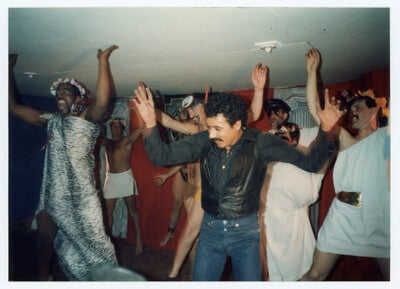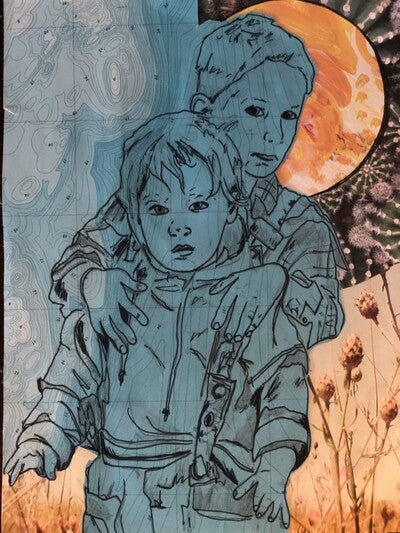We can look for evidence or proof of queerness in places like the dancefloor, a “space where relations between memory and content, self and other, become inextricably intertwined” -Muñoz, Cruising Utopia
I long for the dance floor, for a queer bar, a space to watch how everyone express themselves, their bodies, their hair, their gestures of joy, to let go. I see the photos from the BJ Bud collection and am reminded that we have always been here, been queer, and nothing is going to change that. I feel a longing, like a nostalgia for the future. One we are still always creating and naming.

Since March, with quarantine and uprising, I have had deeper realizations about my queerness. I say the word out loud and I lovingly believe it, maybe for the first time. There’s a lot more behind how I got here, but the point is, I really wish I had my childhood photos with me now. I am longing for a queer past. Any photos from my childhood are in a box in my brother’s basement, 674 miles away. I want to go through my photos and see the traces of queerness in everything--my body, my hair, my gestures of joy. I can’t exactly call up my older brother and ask him to look through all my photos and just “let me know if you see anything that looks kinda gay” haha. Now I know that my queerness is about so much more than who I date, it’s everything about me. In this book I’m re-reading, Cruising Utopia by José Esteban Muñoz, he talks about queer memory, ghosts, trace, and ephemera. “When the historian of queer experience attempts to document a queer past, there is often a gatekeeper, representing a straight present, who will labor to invalidate the historical fact of queer lives--present, past, and future. Queerness is rarely complemented by evidence, or at least by traditional understandings of the term. The key to queering evidence, and by that I mean the ways in which we prove queerness and read queerness is by suturing it to the concept of ephemera. Think of ephemera as trace, the remains, the things that are left, hanging in the air like a rumor.”


As I go through their instagram repository, and the more I work in the Community-Driven Archives at ASU, I am reminded that there is a power which comes with naming ourselves, describing ourselves, when we live in a world that too often has done it for us, to us, even before we were born. Labeling can be a way of calling parts of ourselves back, an archival return. A helpful practice to map out parts that seemed not to fit before, seemed to have no folder, the parts of ourselves that can feel like loose photographs. A way to say, “here you are” or “that’s where I’ll know to find you”. So I am trying to be the historian of my own queer experience and quiet the straight gatekeeper in my head. Since I cannot physically trace some of my photos right now, I am mentally re-describing each photo of myself to myself, labeling it as a healing practice. [Description: young white #queer plays with plastic toy boat by the pool. They wear baggy jeans, a striped t-shirt, a black baseball cap, and white athletic shoes. In the next photo they stand and hold still for a portrait.] Photo by: Their mother, with adoration. For now, this labeling exercise will be my private queer liberation process. Until we can be back out on the dancefloor, tracing queerness with our bodies, weaving memory and content, self and other, calling each other by the labels we have chosen.
Contact me, Jessica Salow, with feedback at Jessica.Salow@asu.edu, as I would love to hear from you your thoughts regarding the work we here at ASU are doing in community archiving around Arizona. We also want your feedback on what you would like to see from us in future blog posts. And if you would like regular updates from the CDA team please follow our CDA Facebook page or the CDA Instagram page to keep abreast of the virtual events we are doing monthly. We have also made some changes to our website to better describe the community-driven archives initiative at ASU Library so please visit that page to learn more about our work or to connect with the rest of our team.
See you soon!